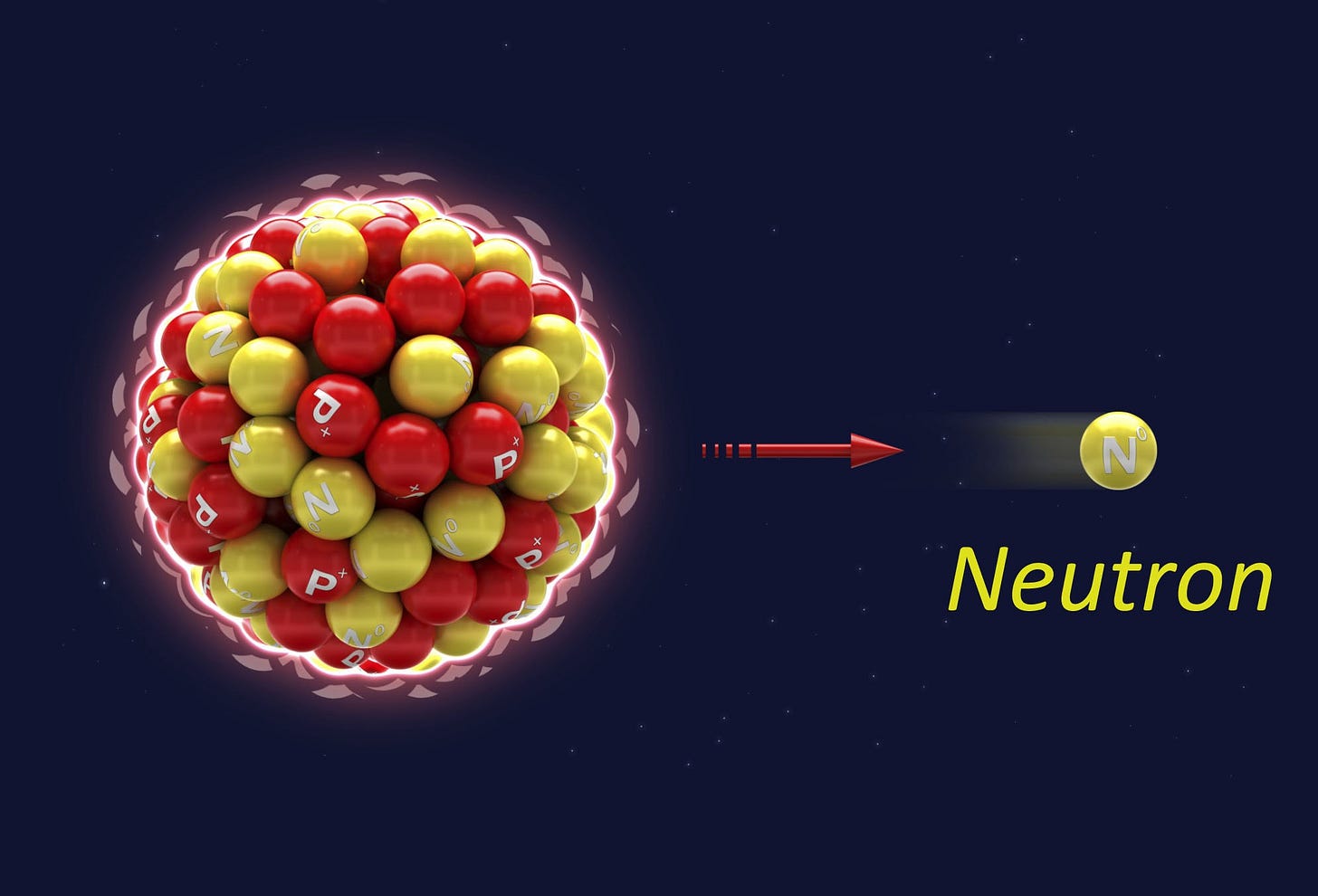Being charged particles, electrons and protons took center stage in the study of subatomic particles at the turn of the twentieth century. Experimental physicists were able to harness the electromagnetic force to investigate their role in naturally occurring radiation and electric currents.
For the very same reason, the neutron long evaded the all-seeing eye of scientific investigation. That was until the work of British physicist James Chadwick. In 1932, he submitted a paper that would permanently alter our understanding of atomic structure: The Existence of a Neutron.
In just a few pages, Chadwick presented experimental results that hinted at a new electrically neutral particle hidden within the atomic nucleus. While the idea of the neutron had been the subject of much speculation for years, Chadwick's experiments provided incontrovertible proof. Few could have known at the time, but this microscopic discovery would inevitably enable humanity to bring the power of a star down to Earth.
Missing Mass
By the 1910s and 1920s, physicists were well on their way demystifying the structure of the atom. Building upon several conjectures from J.J. Thomson’s early plum pudding model to Niels Bohr’s distinctly quantum mechanical model, it was known that electrons orbit a dense nucleus, which contains positively charged protons.
This, however, could not be the whole story. A prevailing impasse was that the number of protons in an atom could not account for the atomic mass of many elements. Helium, case in point, has an atomic number of 2, meaning it has two protons. But, its atomic mass is about 4 atomic mass units.




